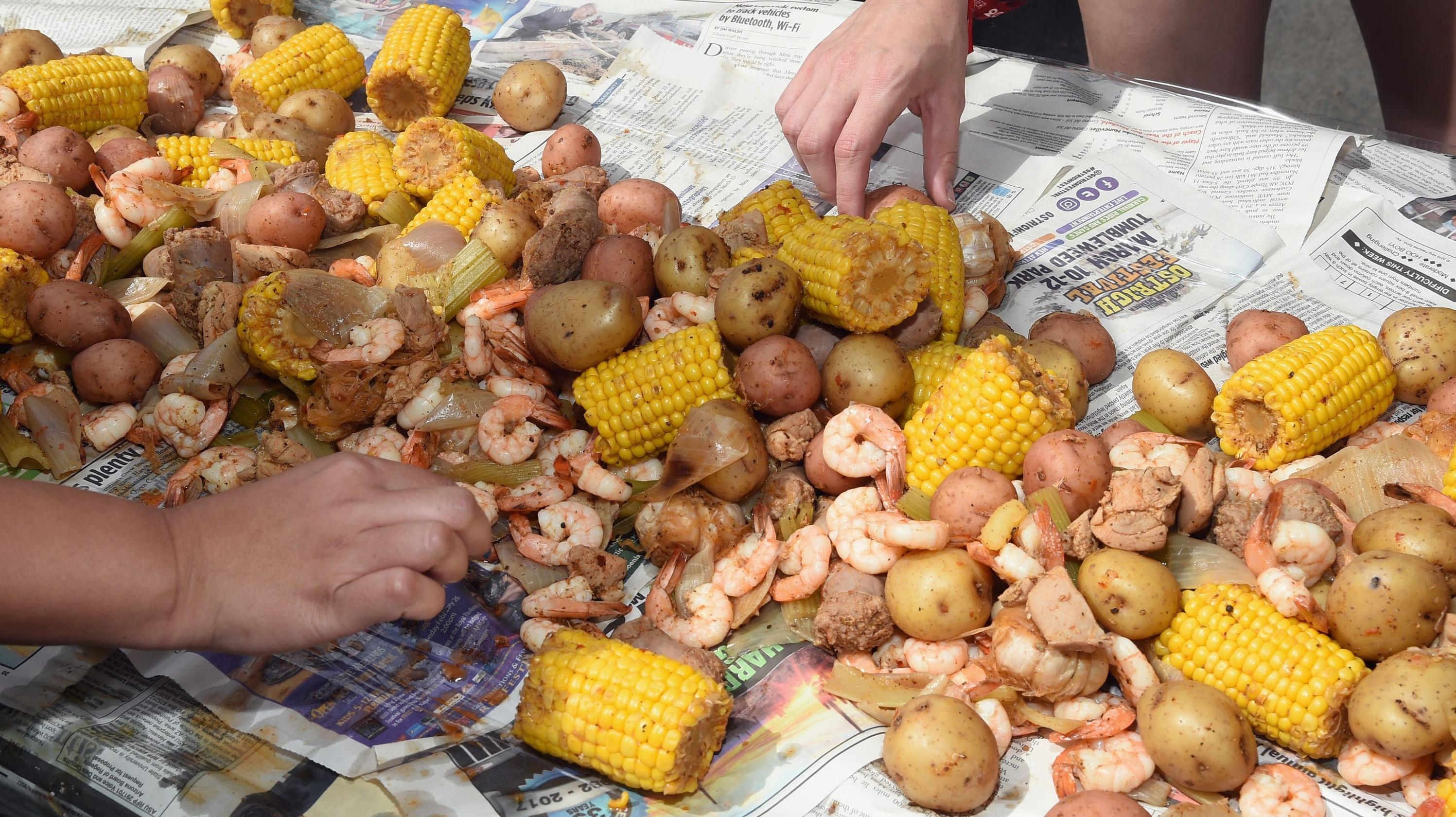8 Seafood Boils, Bakes, And Boating Excursions To Enjoy This Summer
Your guide to the regional seafood rituals that bring everyone together.
Seafood is best enjoyed in a group. Yes, you might have your own solo shrimp rituals, but what's great about a fish-focused meal is that more often than not there's a very specific way you must catch, cook, and enjoy the fish that requires multiple bodies—seafood is made to be served in large quantities, whether in the form of a giant pot full of crustaceans or one monstrous tuna fish.
So gather up two or 12 or 20 of your closest friends and kick off a summer of seafood gatherings.
Clam bake
Mostly taking place in New England, a clam bake is all about the mollusks. This event starts with a fire pit lined with stones and filled with charcoal—the beach is an ideal place to have this setup. Once the coals are hot, the shelled ingredients get layered in and covered with seaweed to create an all-natural steamer. Don't get fussy with seasoning—the clam bake is about letting the briny, saltwater morsels shine on their own. If you want to get fancy, toss in a lobster and serve with the classic bake/boil side of corn and potatoes.
Communal salmon harvest
In Alaska, harvesting salmon is a family affair, particularly in native communities. Subsistence salmon fishing, as it's referred to by NOAA Fisheries, was put in place by the Pacific Coastal Salmon Recovery Fund to provide food security for native families that might otherwise have to pay high prices for resources. And as shown in the TikTok above, it's not a one-person job to bring that harvest in—those who fish for salmon together, stay together.
Crab boil
Yes, it's called a crab boil, but this Chesapeake Bay staple is actually all about steaming those bad boys. Unlike the clam bake, this one comes down to the seasoning—the more Old Bay, the better. The flavor gets amped up in the liquid the crab is steamed in as well, with beer and vinegar often mixed in. This is an operation that features many, many crabs, so you'll need a lot of helping hands to keep them in line and crack those shells when the time comes.
Crawfish boil
Enjoying a Louisiana-style crawfish boil is like a team endurance sport. You're going to need patience and lots of skill to expertly shuck and slurp enough of these little guys to fill yourself up. This is the perfect boil for heat seekers, since the boiling bath is flavored with cayenne, paprika, hot sauce, salt, lemon, and crushed bay leaves, giving these tiny crustaceans (and added corn and potatoes) their flavor.
Fish boil
The fish boil is a gathering so regionally specific that it can be traced to just one county—Door County in Wisconsin, to be exact. Perhaps it's because this potentially dangerous cooking method needs to be contained to just one place (don't try this at home, folks). A pot filled with whitefish, potatoes, and onions is cooked over a huge open flame, made larger still by a ceremonious stream of kerosene to signify that the boil has indeed begun. For safety reasons alone this should not be a solo venture.
Fish fry
While the origin of the fish fry is tied directly to religion across a specific part of the country, it's since become synonymous with Friday nights in the Midwest. Whether you're enjoying it in a church basement or at a supper club, there are five main components to every fish fry: battered and fried whitefish, french fries, coleslaw, bread, and conversation with your great aunt's best friend (or the equivalent).
Low country boil
The low country is the area running the coast from the middle of Georgia up to North Carolina, and they do boils a little differently down there. The low country boil (also sometimes called frogmore stew) features not only shrimp, but also chunks of sausage—consider this your surf-and-turf boil. The main flavorings in this boiling bath are black pepper and malt vinegar, with some trusty potatoes and corn thrown in for good measure.
Tuna fishing
Despite the tiny cans some of them end up in, tuna fish are huge. That's why tuna fishing more often than not takes a large group to accomplish. The ritual of communal tuna fishing dates back to 18th-century Sardinia, where there are specific steps to catching and killing the fish leading to subsistence, which feeds the entire community. Girotonno (Ring Around the Tunas) is a modern-day festival celebrating this ritual.
